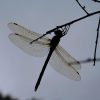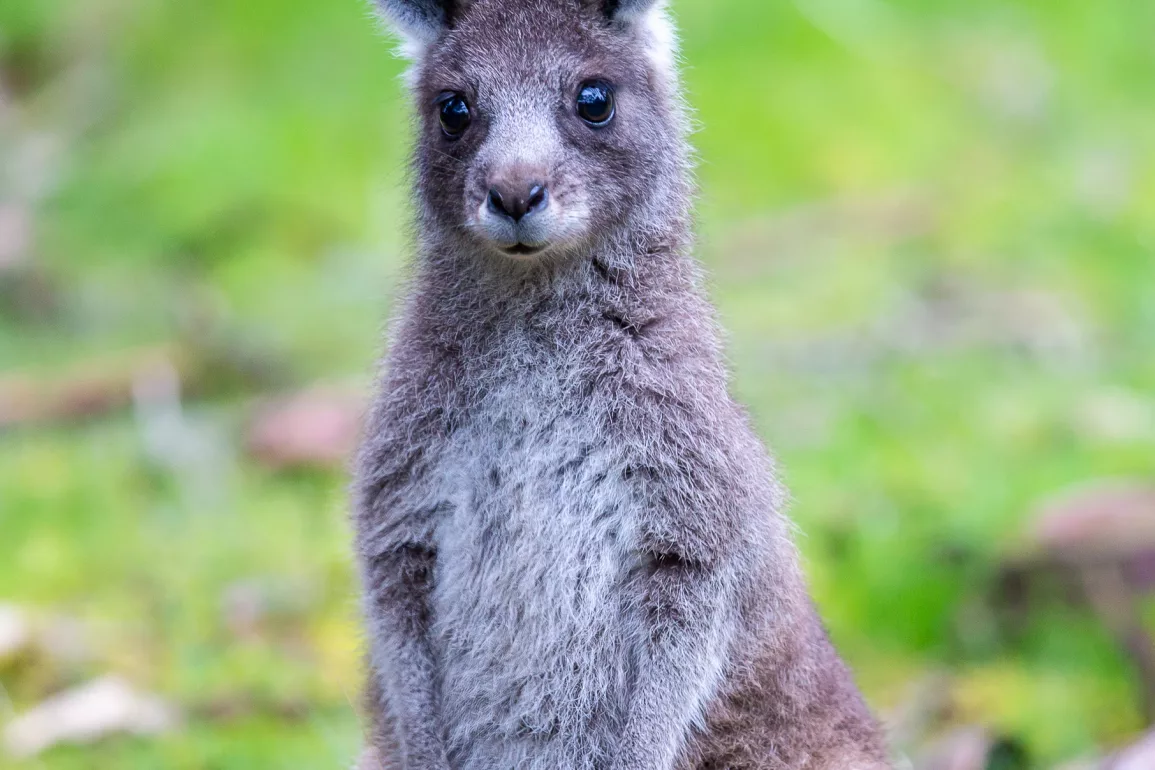Nillumbik’s natural environment is special, and I love living here. My bush property in St Andrews is blessed with a variety of birds, native orchids, and visiting kangaroos who doze in the sun on my north-facing hillside. Occasionally I catch a glimpse of a shy wallaby dashing away through the bush, or I come across a scat left on a rock, telling me that a wombat has passed through overnight. I feel enormously privileged to live in this area, amongst such rich biodiversity.
So, when I discovered that Nillumbik’s kangaroos are being commercially slaughtered, I was appalled. Frankly, I could hardly believe that this could be happening – right now – in our beautiful Green Wedge Shire.
The Kangaroo Harvesting Program (KHP) is a state government program, in which over 65,000 adult kangaroos are scheduled to be killed in Victoria’s Central Region, which includes Nillumbik. Across the whole state, almost 167,000 adult kangaroos are being shot and turned into pet food. Little joeys, such as the one in this photo, which are too small to survive without their mothers and not worth a bullet for their meat, are bludgeoned to death.
This is not an environmental program; it’s a commercial venture which incentivises killing native wildlife for profit. [See djsir.vic.gov.au/game-hunting/kangaroo-harvesting for more information about KHP – Ed]
It is not being implemented in response to any environmental issue, nor in relation to any health or welfare issue relating to kangaroos. The KHP is an agricultural program, sitting within the Minister for Agriculture’s portfolio, administered by the Victorian Department of Jobs, Skills, Industry and Regions. It has spawned a brand-new agricultural industry in Victoria.
Business operators become licensed, door-knock landholders for permission to shoot as many kangaroos as they want and then sell the carcasses to a meat processing plant to become pet food. Also recognised as a “Developmental Wildlife Trade Operation”, the KHP allows “products” obtained through the program to be exported internationally. I imagine that the killing of kangaroos is a lucrative business for its operators, given the access to a free natural resource and the tiny business overheads.
In my opinion, a commercial enterprise that monetises precious native wildlife is totally inappropriate for Nillumbik’s Green Wedge. This area is renowned for its wonderful natural environment and native wildlife. Ours is not a predominantly agricultural area and our community is not a community of farmers. I estimate that we have many more “Land for Wildlife” properties than we do commercially operating farms. In Nillumbik’s rural areas, lifestyle/recreational small-acreage properties abound, with grazing paddocks usually occupied by horses, while others are covenanted bushland. Houses in parts of Eltham, North Warrandyte and Kangaroo Ground adjoin the Yarra River and its natural wildlife corridor. My own small property of 3.5 hectares of bush is not uncommon within Nillumbik.
Apart from a few small pockets of agriculture, the large majority of us in Nillumbik do not make an income from our properties and I believe that many share my abhorrence of monetising our wildlife. For generally we love our native wildlife here and value it as an integral, important part of the superb natural environment in which we live. Kangaroos, in the main, are seen as an enormous asset, not a problem. Sometimes, they even serve as a drawcard for visitors who are keen to see kangaroos in the wild. In essence, most of us want to see our precious kangaroos protected, not shot.
However, Nillumbik does have one large problem. It’s not kangaroos; it’s deer. An introduced species, their numbers are increasing rapidly and the destruction they are causing to bushland, pasture and fencing is immense. While some control is happening, it is on a very small scale and often quite ad hoc. It is extremely disappointing that it’s kangaroos, and not deer, that have been targeted in such large numbers by the State Government.
No discussion about the KHP is complete, I’m afraid, without mentioning the cruelty of this program. I will be brief. The program specifies that adult kangaroos are to be humanely killed by a single shot to the head, and joeys (deemed too young to survive alone) are to be killed by a blunt force to the head. I wish that I could say that this always happens, and that all deaths are instant . . . but this is not the case. I wish that I could unsee photos which have been sent to me of maggot-infested kangaroos, shot elsewhere in the body, and which are still alive weeks later. I deliberately do not show these photos, as they are too distressing. But for the locals who have come across an injured, suffering kangaroo, this is the gruesome, horrific reality of the Kangaroo Harvesting Program. I am enormously grateful to all our local wildlife volunteers who deal with the aftermath, and failures, of this commercial enterprise.
In August, I realised that I could no longer stand by, knowing that this was all going on. I began a petition, calling on the Victorian Government to remove Nillumbik from the KHP. I have been thrilled by the amount of support my petition has received. To date, 13,584 people have signed online at www.change.org/p/save-nillumbik-s-kangaroos-stop-the-slaughter, and another 602 signing on paper! With over 14,000 of us, we are sending the message – loud and clear – that the community wants to protect Nillumbik’s kangaroos and does not want them to be a part of this commercial slaughter program.
So far, one State Government member of Parliament has heard our message. Aiv Puglielli, Greens MP for North-Eastern Metro (which includes Nillumbik), has called on the Minister for Agriculture, to remove Nillumbik Shire from the KHP.
And now alongside 14,000+ other people, I await the Minister’s reply. Our numbers continue to steadily grow. Join us, if you haven’t already. Together we can be successful in protecting Nillumbik’s precious kangaroos.
This article has been written by Liezl Shnookal, a local activist and author. Her latest novel is Nikki vs Jess, United Against the World.





